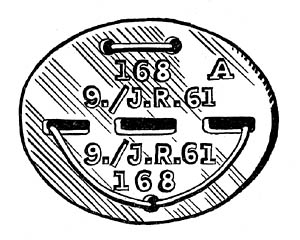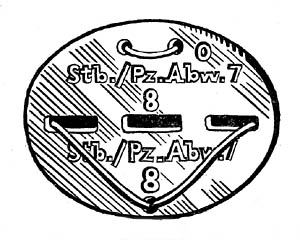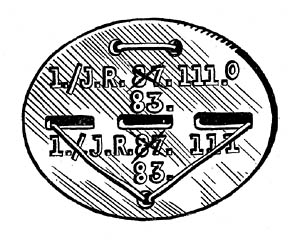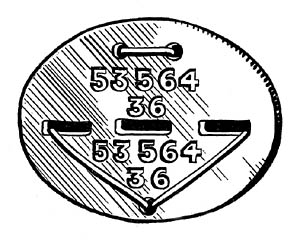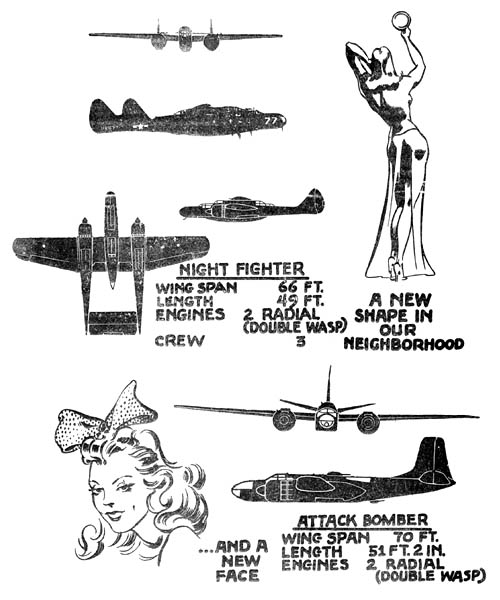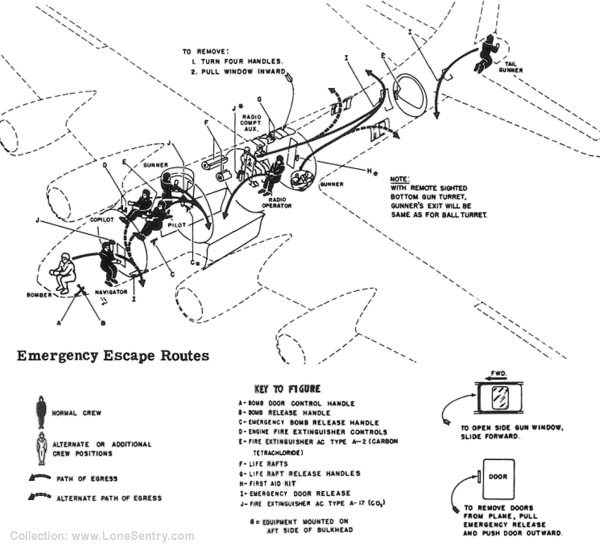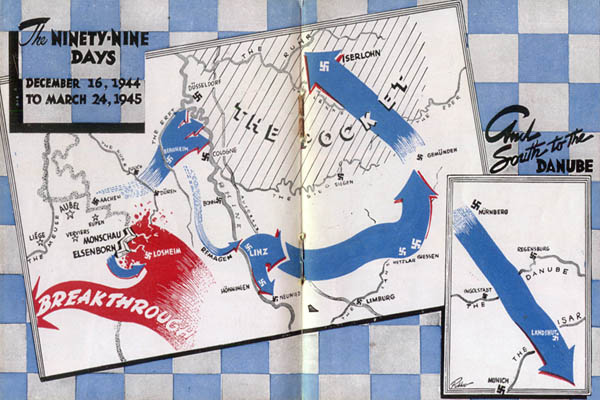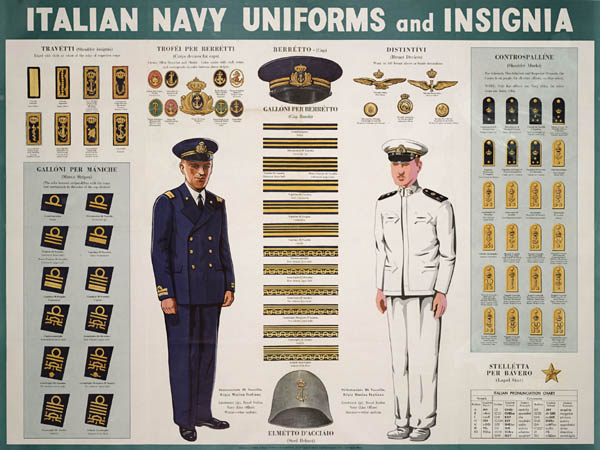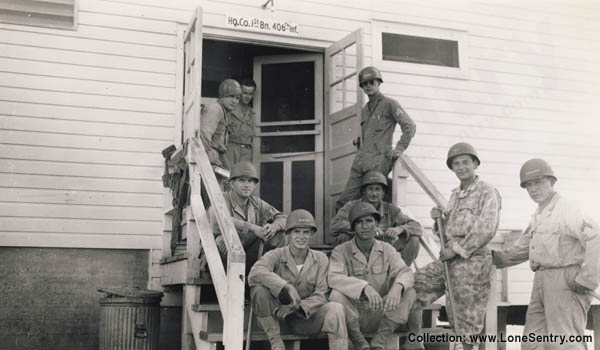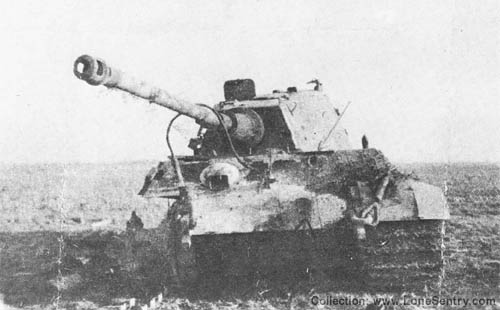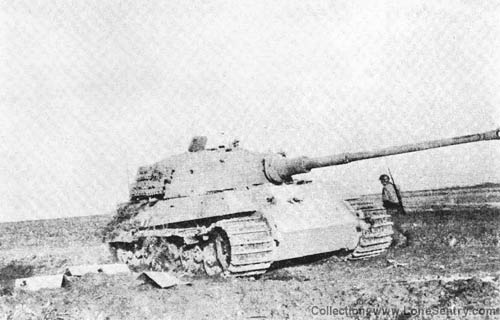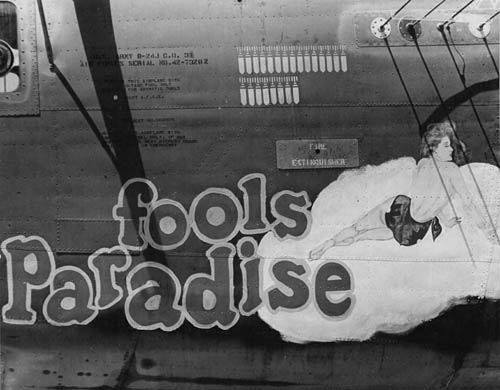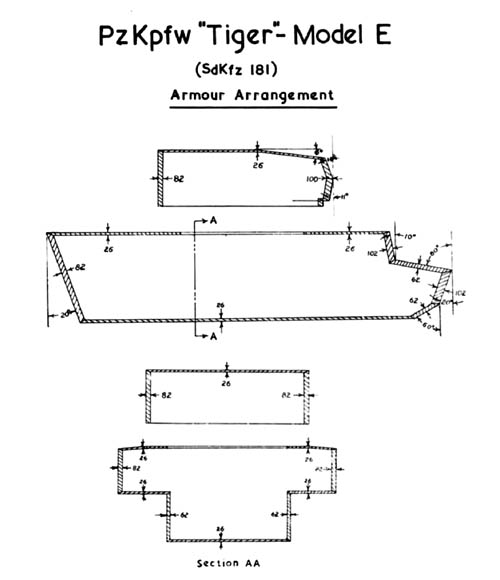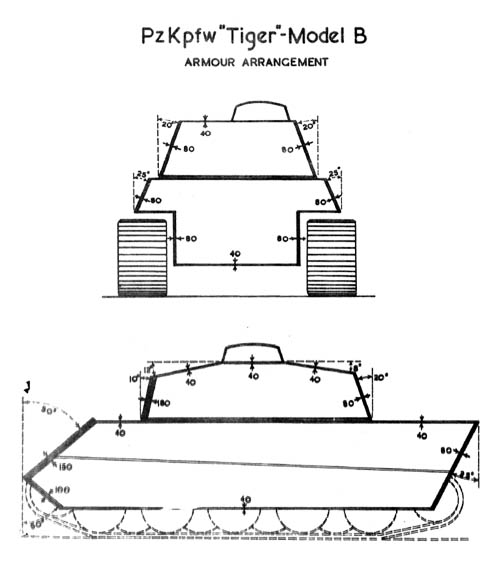From Handbook on German Army Identification, U.S. Military Intelligence Training Center, Camp Ritchie, Maryland, 1943:
German identification tag (Erkennungsmarke).
a. It is believed that every German officer and soldier carries an identification tag, which is usually worn around the neck. The tag is made of zinc, is oval in shape, and measures about 2 by 2¾ inches. It is divided into an upper and a lower part by perforations. Each half bears identical markings.
b. When a man is killed, the lower half of the tag is broken offand sent back to Germany and the upper half is buried with the body. Identification tags captured up to the present bear only the unit, subunit, and a number. This number is also inscribed on the first page of the pay book (Soldbuch). The tag also bears a letter or two letters indicating to which blood group he belongs (A, B, AB, or O). The identification tag seldom shows the unit in which the man concerned is now serving unless he has lost the original disk issued to him on being assigned to a depot unit and his present unit has issued a replacement. The tag may record the existence of a previously unidentified unit.
c. A report should always be made of the entries on the tags.
A captured identification tag of the old type. 168 is the personal number. 9th Company of the 61st Infantry Regiment. Blood group “A”.
8 is the personal number. Stb. means Staff. 7 Pz. Abw. means 7th Division Antitank Battalion. Blood group “O”.
83 is the personal number. 1st Company of 111th Infantry Regiment (formerly of 87th Infantry Regiment). Blood group “O”.
The new type identification tag, five-digit serial number indicates field post number which is that of the messing unit. 36 is the personal number.

